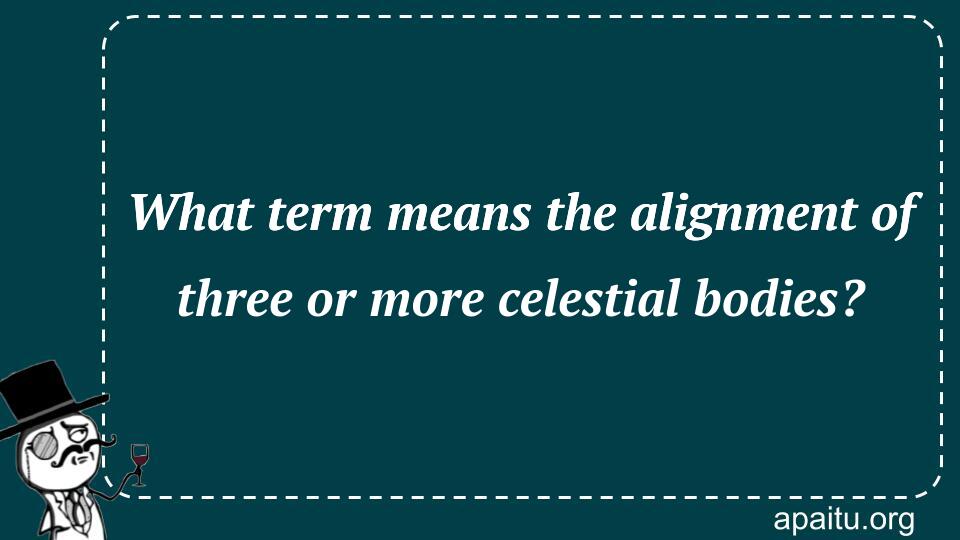Question
Here is the question : WHAT TERM MEANS THE ALIGNMENT OF THREE OR MORE CELESTIAL BODIES?
Option
Here is the option for the question :
- Perihelion
- Apastron
- Achondrite
- Syzygy
The Answer:
And, the answer for the the question is :
Explanation:
When three or more heavenly bodies form a straight line, this phenomenon is known as asyzygy. This can mean either the alignment of the planets, which can induce a solar or lunar eclipse, or the alignment of the Earth, moon, and sun, which can cause either. As the end of the world was thought to be imminent when all the planets were in alignment, syzygies were of great interest to mediaeval scholars.

Syzygy is a term used to describe the alignment of three or more celestial bodies in a straight line. This phenomenon can occur between any combination of celestial bodies, including planets, moons, stars, and even galaxies. The term syzygy comes from the Greek word syzygia, which means “yoked together” or “connected.”
Syzygy can produce a variety of interesting and sometimes dramatic effects. One of the most well-known examples of syzygy is a total solar eclipse, which occurs when the Moon passes directly between Earth and the Sun, blocking out the Sun’s light and casting a shadow on Earth. During a total solar eclipse, the Moon, Sun, and Earth are all in syzygy.
Syzygy can also produce other types of eclipses, such as lunar eclipses, which occur when Earth passes between the Sun and the Moon, casting a shadow on the Moon. During a lunar eclipse, the Earth, Sun, and Moon are all in syzygy.
syzygy can also produce other interesting phenomena. For example, during a planetary alignment, several planets can appear to be in a straight line in the sky. This can occur when the planets are on the same side of the Sun and can be observed from Earth.
Syzygy can also play a role in tides on Earth. When the Moon and the Sun are in syzygy, their combined gravitational pull on Earth is stronger, resulting in higher tides, known as spring tides. Conversely, when the Moon and the Sun are at right angles to each other, their gravitational pull on Earth is weaker, resulting in lower tides, known as neap tides.
syzygy is a fascinating phenomenon that can produce a variety of interesting effects in the night sky and on Earth. Whether observing a total solar eclipse, a planetary alignment, or the ebb and flow of tides, syzygy reminds us of the interconnectedness of the celestial bodies in our solar system and beyond.